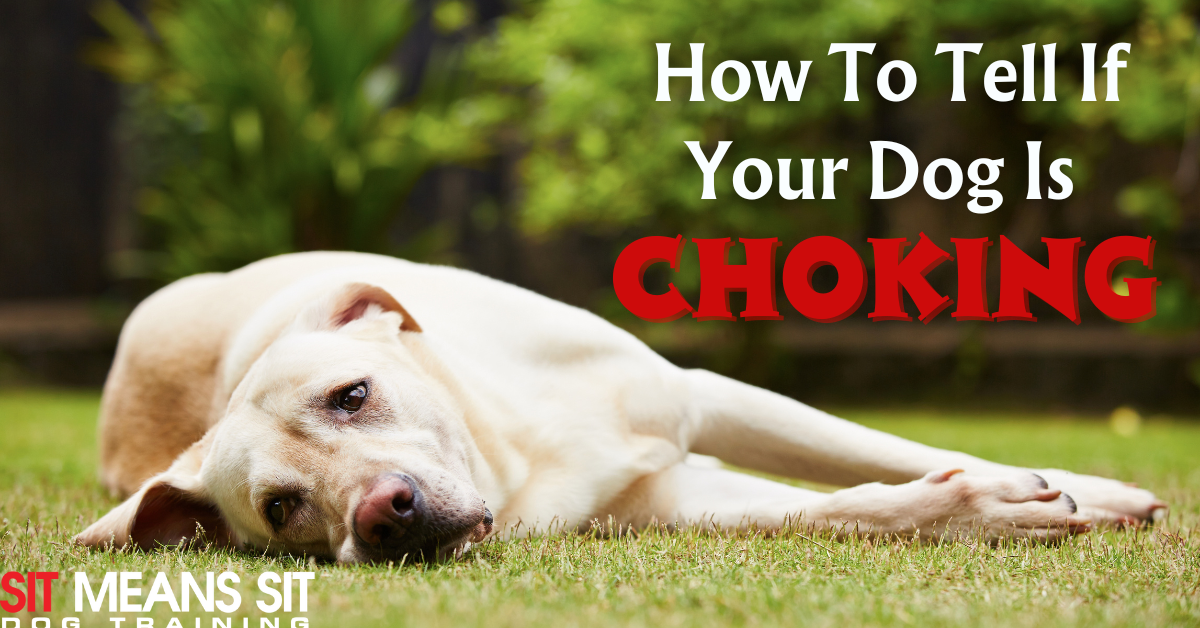
What Should I Do if My Dog is Choking?
It’s every pet parent’s worst nightmare. Your dog is in life-threatening trouble, and you don’t know what to do. Dogs can get hurt easily, and choking is one of the many hazards dog face. This guide will tell you what to do if your pup is choking.
Check if your pup is choking.
If your dog is retching, drooling, pacing, or pawing at their mouth, try to open your pup’s mouth. First, put your hand around Fido’s muzzle, and place your thumb and pointer finger behind their canine teeth. Then, lift the upper jaw and peer down the windpipe for a stuck object.
Disloge object.
If you can see the stuck object, try to dislodge it using your fingers, tweezer, or even tongs. Make sure not to push the object further down the airway. If that doesn’t work, use gravity. If you have a smaller dog pick up your small dog by their hindlegs and face facing the floor. However, if you have a larger breed, hold your dog’s hind legs up higher than its body height.
Heimlich Maneuver
For smaller breeds
If the object is still stuck, you must perform the Heimlich maneuver. First, roll them onto their back or hold them up with their back to your front. Then, feel for the soft spot under your pooch’s ribs. Make a fist and place your other hand on top of it. Finally, push your first in and out of the soft spot five times to create short blasts of pressure. Hopefully, the pressure should dislodge the item from the windpipe.
For larger breeds
First, hold your pup with its back to your front. Second, wrap your arms around it and find the soft spot. Then, make a fist and place your other hand on top of it. Finally, push your fist in and out on the soft spot; the blasts of pressure should dislodge the object.
Check if your dog is breathing and for a pulse.
To check if your pup is breathing, place a hand on Fido’s chest and see if it moves up and down. You can also place a tissue in front of their nose and see if it moves. To check your dog’s pulse, place your fingers inside its inner thigh. You can feel a heartbeat pulsing below the surface. Also. You can also feel a heartbeat if you place your hand where your pooch’s elbow meets its chest.
Perform CPR
If your dog has no heartbeat or is not breathing, you must perform CPR on the way to the vet. CPR has two parts, chest compressions, and rescue breathing.
Rescue Breathing
First, place your dog on its side and open their windpipe by tilting its head back slightly. Then, create a seal by placing your hand over your dog’s nose and mouth. Finally, exhale into your dog’s breath until you can see its chest rise. Repeat, then start chest compressions.
Chest compressions
For smaller breeds, place your hands around the area of their chest and squeeze. Squeeze to the rate of 120 times per minute with 2 rescue breaths every 30 compressions. Then, for larger breeds, place your pup on the widest area of the chest wall. Depress the ribcage 1.5-4 inches to the rate of 120 times per minute with 2 rescue breaths every 30 compressions. Continue until you reach the vet or your dog starts breathing.
Your dog choking can be a scary experience. Try to keep a level head and stay calm, and contact your vet immediately.
